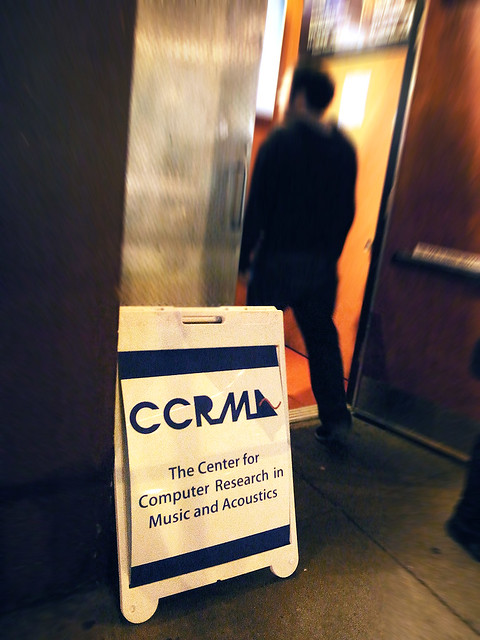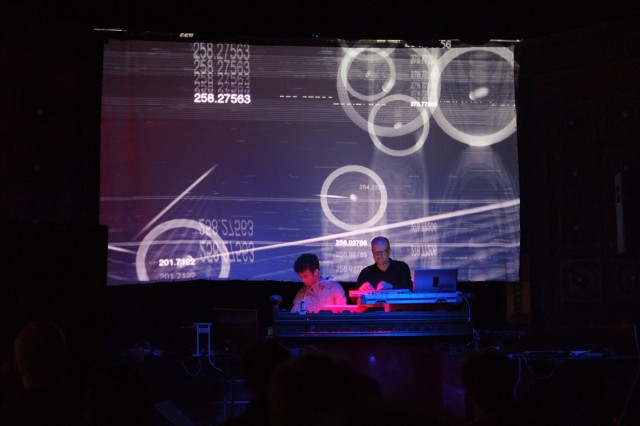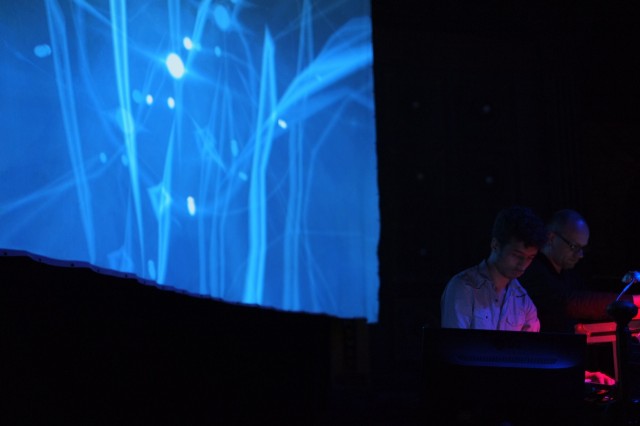Ivory tower, let down your hair.
Make no mistake. The slightly-impossible-to-pronounce acronym CCRMA (“karma”), standing for the not-terribly-sexy “Center for Computer Research in Music and Acoustics,” is one of the world’s hotbeds for innovation in electronic music. From the lowest-level DSP code to the craziest live performances, this northern California research center nesting at Stanford is where a lot is going on. So, when they put on a concert, this isn’t just another dry exposition of “tape” pieces, academics scratching their chins and trying not to nod off. (Trust me: I’ve … on occasion darned nearly rubbed my chin raw in that scene.)
No, this is a sampling of the state of the art in live music. CCRMA is currently hosting Robert Henke aka Monolake; it’s the school where Holly Herndon is finishing her studies while simultaneously upending the dance music scene, it’s a place where people learn the nitty gritty of sound and then re-imagine how to play with laptops.
And it’s also where another musician is doing extraordinary work – CDM contributor Gina Collecchia. Naturally, we asked Gina to give us a peek so we could live vicariously through her. It’s striking to see that the technologies here run the gamut from simple transducers to vivid generative software structures. People aren’t really so concerned about whether they’re working in low or high fidelity, tens of thousands of lines of code or old-fashioned mic technique; its on to the sound.
And Herr Monolake has been kind enough to let us share ten minutes of that live performance. I heard this duo in Berlin, and it’s stunning in person, but you can get a feel for Robert working live even in the stream. See also Tarik Barri talking about how he does visuals and works with Jitter, at top, courtesy the fine folks of Cycling ’74. Have a listen, have a look, and then get your Google ready for all the artists Gina scopes out below. -PK
Every year, Stanford University’s Center for Computer Research in Music and Acoustics (CCRMA) puts on Modulations, a concert showcasing some of the best music that comes out of the CCRMA community.
The night was rich with electronic music both danceable and cerebral, and gorgeous visuals were supplied by Mary Franck and Tarik Barri. Visiting professor Robert Henke headlined the event this year, playing under his moniker monolake, with long-time collaborator Tarik Barri manipulating visuals live. Henke is teaching a class at Stanford on composition called “Sound, Structure, and Machines“, while Barri is working with Atoms for Peace.
Carr Wilkerson has put on Modulations since its first year at CCRMA in 2007. The first Modulations was actually in New Orleans and a concert for electronic musicians at Tulane University.
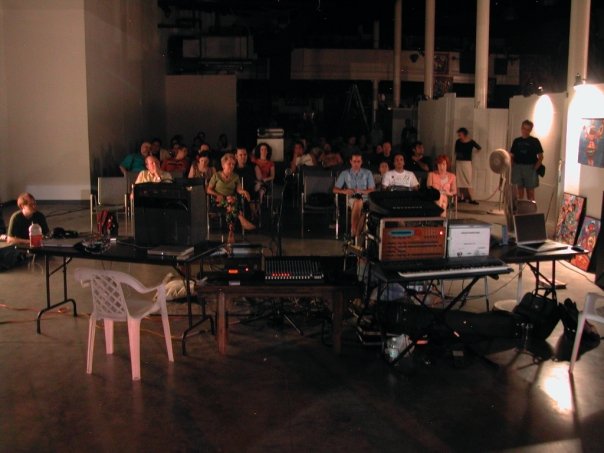
Photo from the 2005 Modulations in New Orleans, LA. Source: Carr Wilkerson
The vision for Modulations at CCRMA was similar: break out of the ivory tower of academia, and connect with the community at large. CCRMA holds many concerts throughout the year, open to the public and usually well-attended, but always on campus either at the program’s building (which, to be fair, is pretty killer) or at the new Bing Auditorium. Modulations is the only event thrown by CCRMA in San Francisco, a city whose music technology community is rapidly growing in many directions.
This was the first year that Modulations ran for 2 nights, April 6 and 7 at Broadway Studios in North Beach, San Francisco. Previously it was held at CELLspace in the Mission District, as well as the Compound and SOMArts. CELLspace recently closed its doors but will reopen as Inner Mission SF.
Both Saturday and Sunday were structured to flow from more ambient, avant-garde computer music to modern live electronica. Kurt James Werner’s piece “First Cyclical Redundancy Check” explored glitches both visual and auditory. He used a technique I call “meta-Jittering” to produce his visual effects, using Jitter functions on the Max patch and MATLAB script GUIs themselves.
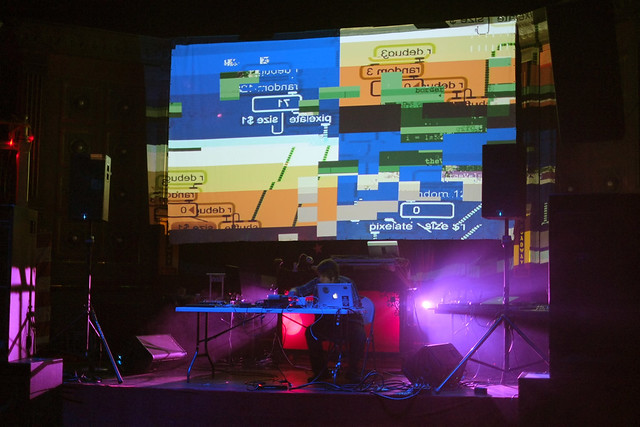
Kurt James Werner plays his MATLAB + Max/MSP + Jitter creation. Source: Gina Collecchia
He played on a home-brewed circuit bent Yamaha PSS-270 with some samples from his 2012 album Schism Method.
RVNG artist and PhD candidate Holly Herndon performed with a huge range of live vocal processing techniques for her set, featuring works from her new album, Movement.
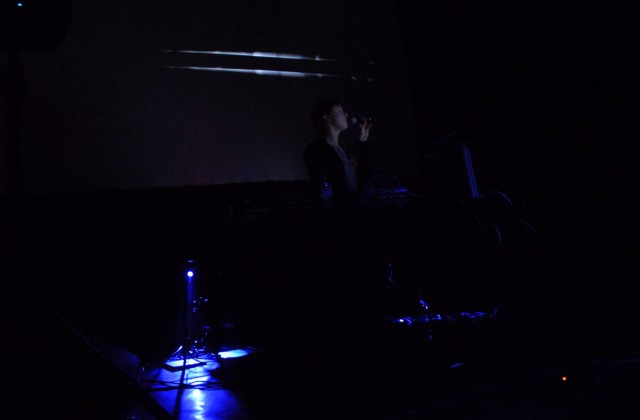
Holly Herndon performs with live vocals at Modulations.
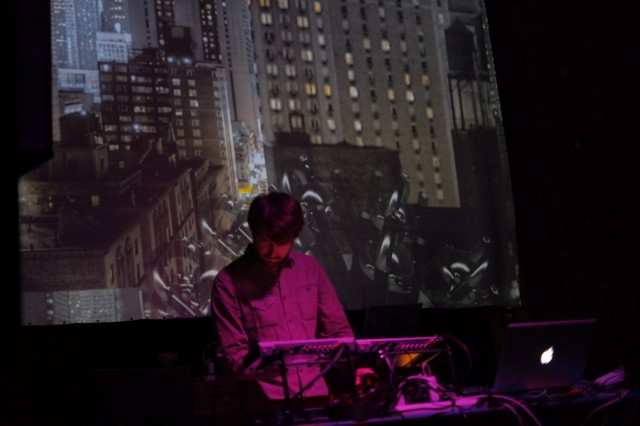
Luke Dahl played a live set alongside industrial animations by Mary Franck.
monolake closed the night both Saturday and Sunday, performing Ghosts. He played a large part in prescribing the speaker configuration at Modulations, featuring a large, 4-channel Meyer sound system for the front of house, an 8.6-channel circular configuration of speakers hanging above the stage (adding spatialization via Ambisonics), and 2 monitors on stage. He used an iPad running Lemur and 2 Doepfer MIDI faders to perform Ghosts live.
Downstairs, student projects from the CCRMA class Music 250B were installed throughout the room. These installations were experiments in reverberation, many using transducers to create amplifiers out of the unexpected.
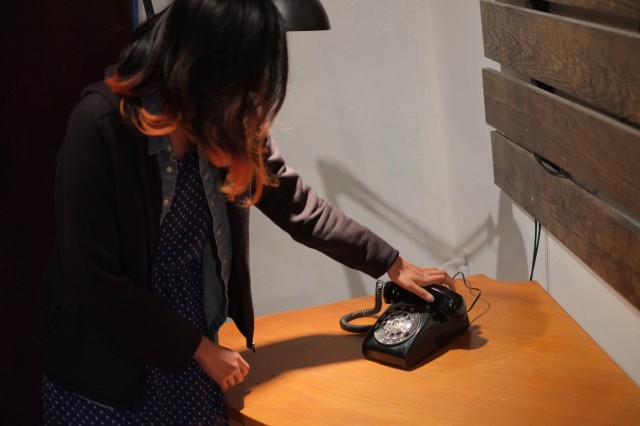
A phone was wired up to a sink to route sound.
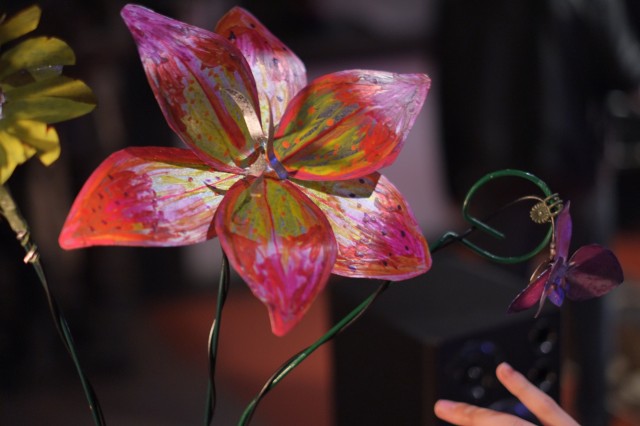
Transducers on metal flowers create unique timbres.
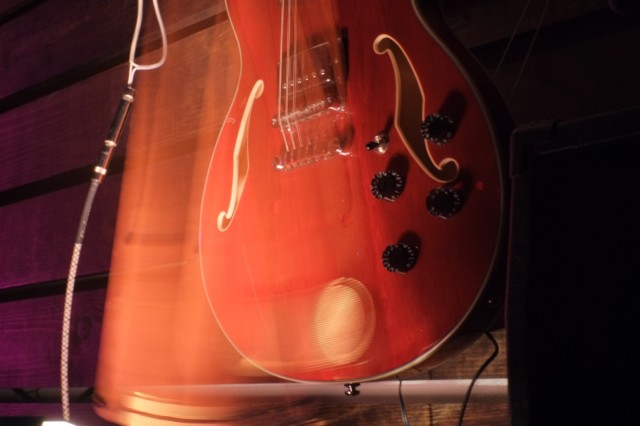
Jeffrey Rowell’s “pendulum guitar” magnetically induced amplitude modulation.
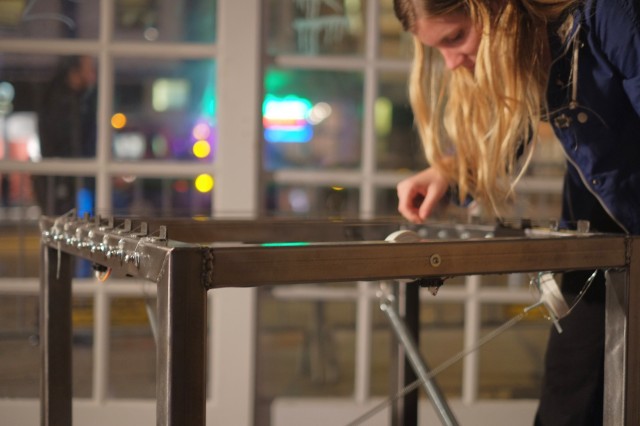
“Room in a room” by Romain Michon suspended springs in a hand-welded cart and processed the signal with a Raspberry Pi.
Other artists who presented were Jennifer Hsu, Locky, Fernando Lopez-Lezcano, Mike Gao, Myles Borins, Tim O’Brien, Eoin Callery, Colin Sullivan, Alexandra Hay, and Luke Iannini. SF-based artists Wobbly and Sutekh played at Modulations in 2011. Christina Chatfield and Tarik Barri headlined in 2012.
Robert Henke performs his new work Stanford Dust on May 23 and 24 in Bing Studio on campus, and again with his Sound, Structure, and Machines class at the CCRMA Spring Concert on May 28, at the same venue. Tickets: May 23 ($10), May 24 ($10), May 28 (FREE).
https://ccrma.stanford.edu/
http://ginacollecchia.com/
